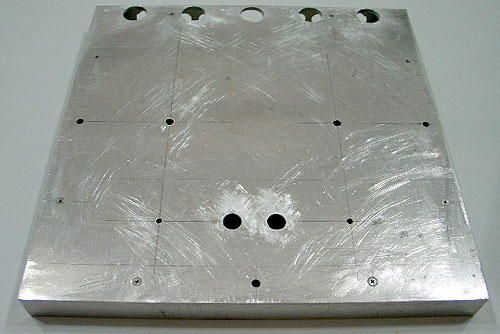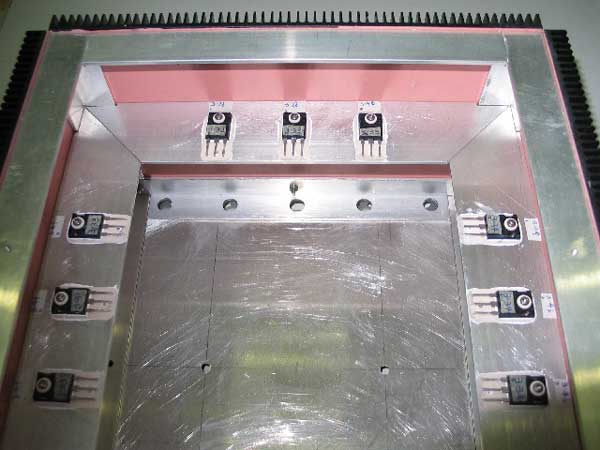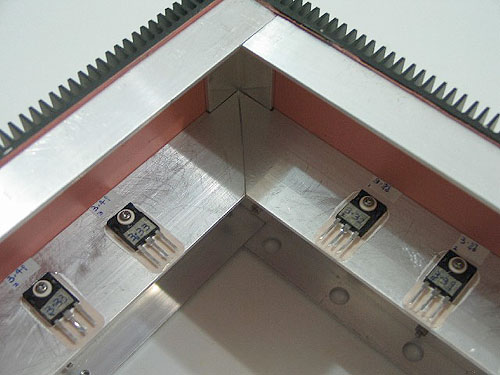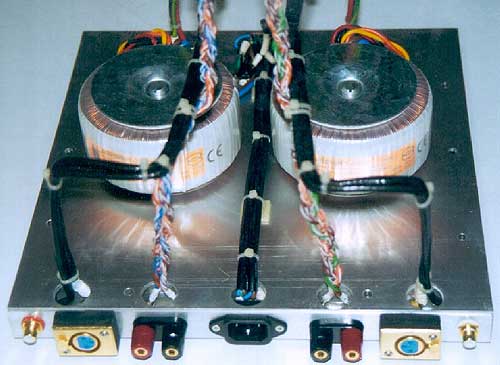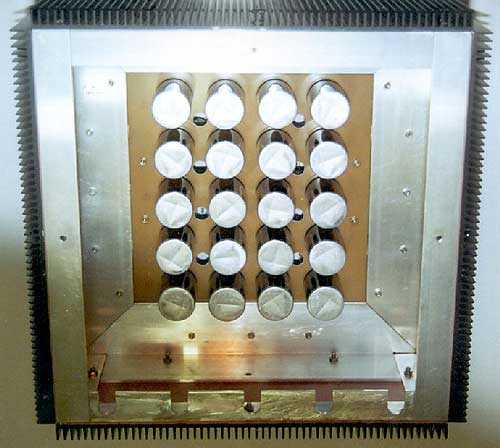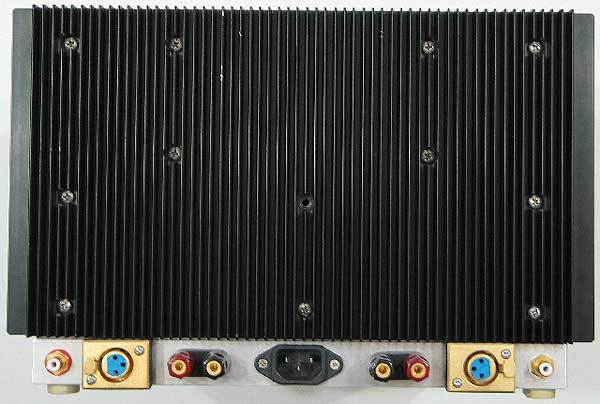Miscellaneous Projects
The most time consuming in building such project is to source for all the necessary parts especially when you cannot obtain them from a single source. I have tweaked the original design slightly by having a dual power supply in a single chassis. In another word, this is a dual monaural stereo Class A power amplifier.
The power supply consists of dual toroidal transformers, dual bridge rectifiers and twenty power electrolytic capacitors. All the power capacitors are soldered on an un-etched PCB, being used as a ground plate and shield between the power and the amplify section.
As you can see from the photos, my technique of connecting up the circuit utilized the point-to-point connectivity. This methodology will have the least soldering joints and it is possible as this is a simple circuit.
The heat sinks are recycled from some obsolete industrial equipment. I obtain them for free, so I only invest on the aluminum frames and the top & bottom panels. Most of the components use in this project are carefully selected and matched from a large amount of parts. After burning a couple of my weekends, I finally bring the amplifier alive without much obstacles. I am amazing by the sound of this amp produced that I decide to build another similar one so that I can have a bi-amp configuration.
The setup of my current system is as follows:-
CD player connects to the active cross-over network, and the high-pass output of the network connects to the tweaked A5 amplifier driving a pair 60-inches ribbon speakers. As for the low-pass output of the network, it is handled by the other tweaked A5 amplifier driving a pair of NHT 1259 bass speakers.
And how does it sound? Oh, it's wonderful. The bass is powerful, fast and tight. The treble is dynamic, detail and clear. One thing you have to be cautious with this amp, especially if you have kid around. This amplifier generates a lot of heat and the heat sinks are really hot even if you leave it on without playing any music. Reason being this is a Class A amplifier.
Details of my A5 project can be found at http://www.geocities.com/ec1288/index.html
Last but not least, special thanks to Nelson Pass for his willingness to share his designs.
Edwin Chng









